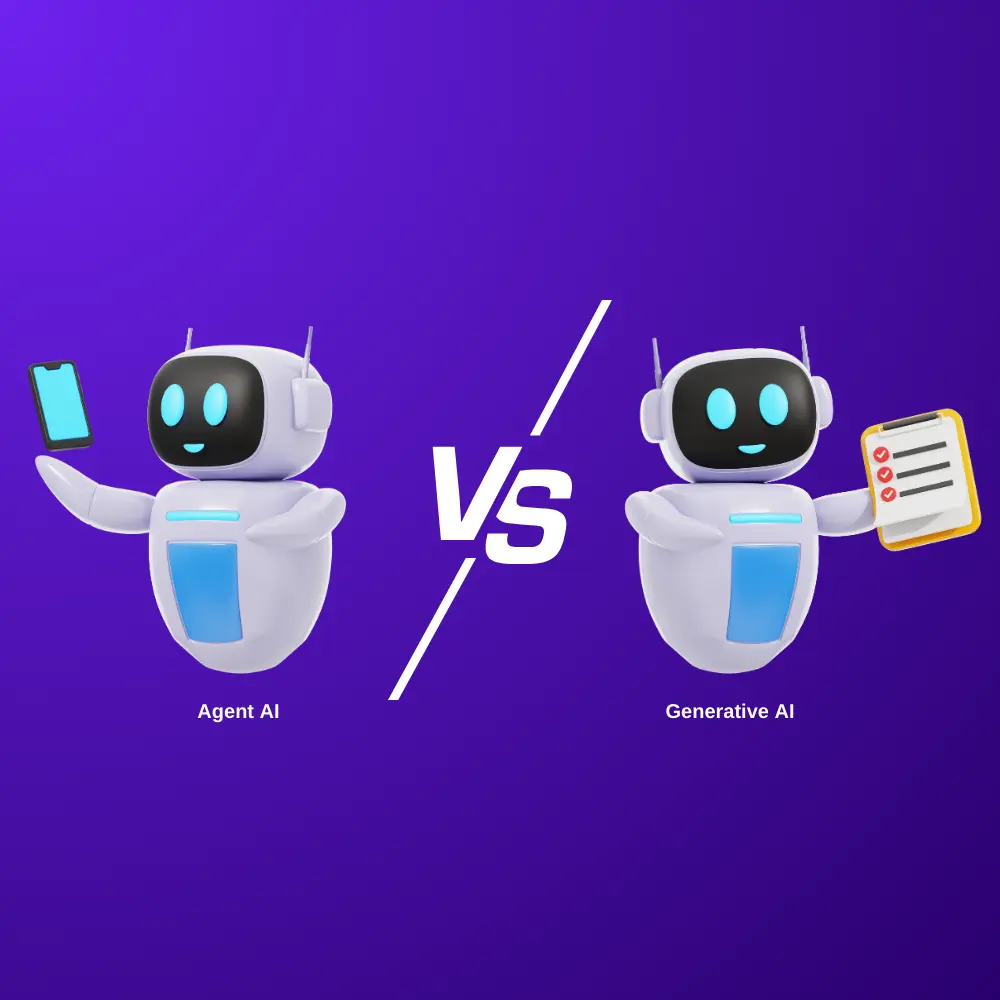The fusion of 5G technology and generative models has opened up a world of possibilities in the realm of Artificial Intelligence (AI). Generative models, like Generative Adversarial Networks (GANs) and Variational Autoencoders (VAEs), have impressed us with their ability to generate lifelike images, text, and even music.
However, these models often demand substantial computational resources to perform at their best. That’s where 5G technology comes into play – the next generation of wireless networks offering lightning-fast speeds, minimal delays, and enhanced connectivity.
In this article, we will delve into the remarkable synergy between 5G and generative AI, exploring how this collaboration can accelerate generative models, and presenting new opportunities and applications for a variety of fields, such as e-commerce development or website designing.
Understanding Generative Models
Generative models belong to the exciting world of AI, where they learn to create new data samples that closely resemble a given training dataset. For a website design company, these models can be harnessed to generate realistic product images, personalized content, and engaging designs.
For example, GANs can create product visuals that showcase various options and styles, helping e-commerce businesses visualize their inventory and enhancing the user experience. VAEs, on the other hand, can generate unique and compelling design elements, enabling innovative and personalized layouts.
Generative models have found remarkable applications across various domains, including image synthesis, text generation, and even drug discovery. However, their hunger for computational power often poses challenges, especially in real-time or resource-limited scenarios.
Meeting the Demands of Generative Models
Generative models are computationally intensive, necessitating significant processing power and memory. The process of training and fine-tuning these models can span several days or even weeks, limiting their scalability and real-time feasibility. Generating high-quality samples often requires complex calculations and large datasets.
To address these challenges, researchers have been exploring innovative approaches to accelerate generative AI. To boost the efficiency of generative models, they have focused on optimizing algorithms. They are developing specialized hardware accelerators and harnessing the power of parallel computing architectures.
However, integrating 5G technology introduces a new avenue for acceleration by offering high-speed connectivity and distributed computing capabilities.
Leveraging the Power of 5G Technology
5G boasts an array of advantages that make it an ideal companion for generative AI. This benefit is not limited to any specific industry or organization. First and foremost, its significantly higher data transfer rates enable lightning-fast transmission of large datasets and model updates.
It reduces the training times for generative models. The improved bandwidth facilitates seamless communication between devices and cloud infrastructure. It enables efficient model training and streamlines data exchange. The ultra-low latency of 5G networks paves the way for real-time communication and computation.
It is a vital requirement for interactive generative applications in the context of website design companies. Imagine website designs being generated in real-time, allowing designers and clients to instantly collaborate and visualize the design choices. Thanks to the low latency of 5G, data transmission delays are minimized.
It ensures smooth and responsive generative experiences. The increased network capacity of 5G fosters the seamless exchange of vast amounts of data, essential for training deep generative models. Large-scale datasets are pivotal in enhancing the quality and diversity of generated outputs.
For instance, it allows e-commerce development companies to offer personalized shopping experiences and targeted product recommendations. With 5G technology, researchers can efficiently access and share these large datasets, encouraging collaboration and advancing generative AI research.
Distributed Computing and Edge Computing with 5G
The distributed computing capabilities of 5G enable efficient offloading of computational tasks from edge devices to cloud servers. It presents a significant advantage, especially for resource-constrained devices like smartphones. Such devices can leverage the computational power of cloud servers to run complex generative models, thanks to 5G.
By sending data to the cloud for processing, edge devices receive real-time results or model updates. It enhances an organization’s generative capabilities. Edge computing with 5G brings computation closer to end-users, reducing latency and enabling real-time generative applications.
It is particularly crucial for applications like product customization, where immediate visual feedback based on generative models is necessary. Edge devices can harness the low-latency connectivity of 5G to perform real-time inference, generating product visualizations on the fly and enabling rapid customization for customers.
In addition, edge computing with 5G opens up avenues for privacy-preserving generative AI. When we talk about keeping customer data safe and following privacy rules, one way to achieve this is by processing and training data on the devices themselves, like smartphones or computers.
Instead of sending the data to a central server, it stays on the devices. It helps minimize the risk of data exposure because the sensitive information remains local within the device. It also ensures compliance with privacy regulations as the data doesn’t leave the device, ensuring its security and privacy.
Facilitating Data Accessibility and Collaboration
The advanced capabilities of 5G technology bring high-speed and reliable connectivity, making it easier to access and share data. It is beneficial for the AI community, including researchers and practitioners. They can seamlessly collaborate by exchanging large datasets, pre-trained models, and experimental findings.
With 5G, data accessibility is enhanced, enabling effortless sharing and collaboration within the AI community. The fast and reliable connectivity of 5G technology facilitates efficient data exchange and collaboration among researchers and practitioners in various fields.
It fosters innovation and advancements in the field of generative AI. This collaborative environment encourages knowledge transfer, propelling the development of more powerful and diverse generative models for e-commerce and website design applications.
Privacy and Security Considerations
When 5G technology and generative AI are combined, it brings many advantages for businesses involved in online shopping and creating websites. However, it also brings up worries about privacy and security. The greater level of connection and sharing of data made possible by 5G networks requires strong actions.
It is critical to safeguard important customer details and stop unauthorized access. Organizations must implement encryption, authentication protocols, and secure data transmission to ensure the privacy and integrity of generative models and the data they operate on in the context of e-commerce and website design.
Conclusion
The integration of 5G technology with generative AI has the potential to bring significant advancements in various industries. It combines the power of high-speed connectivity and advanced AI algorithms to create new possibilities for different applications. By leveraging the speed, connectivity, and real-time capabilities of 5G, businesses can unlock new levels of efficiency, productivity, and innovation.



